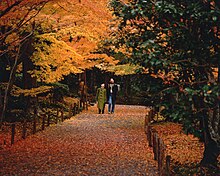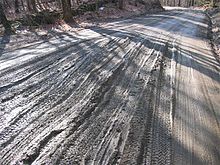Regionalisms

Historically, a number of everyday words and expressions used to be characteristic of different dialect areas of the United States, especially the North, the Midland, and the South; many of these terms spread from their area of origin and came to be used throughout the nation. Today many people use these different words for the same object interchangeably, or to distinguish between variations of an object. Such traditional lexical variables include:[a]
- faucet (North) and spigot (South)[c]
- frying pan (North and South, but not Midland), spider (obsolete New England),[1] and skillet (Midland and South)
- gutter (Northeast, South, and West), eaves trough (West and Inland North), and rainspouting (Maryland and Pennsylvania)
- pit (North) and seed (elsewhere)
- teeter-totter (North; widespread),[c] seesaw (South and Midland; now widespread), and dandle (Rhode Island)
- firefly (more Northern and Western) and lightning bug (widespread)
- pail (North, north Midland) and bucket (Midland and South; now widespread)
- sneakers (Northeast and fairly widespread), tennis shoes (widespread outside the Northeast) and gym shoes (Chicago and Cincinnati)
- soda (Northeast, Greater Milwaukee, Great St. Louis, California, and Florida), pop (Inland North, Upper Midwest, and Northwest), coke (South), and tonic (Eastern New England possibility) See also: Names for soft drinks in the United States
- you guys (widespread), y'all (Southern and South Midland), you'uns and yins (Western Pennsylvania), and yous or youse (New York City, Philadelphia, New Jersey, and Northeastern Pennsylvania)[2]
However many differences still hold and mark boundaries between different dialect areas, as shown below. From 2000 to 2005, for instance, The Dialect Survey queried North American English speakers' usage of a variety of linguistic items, including vocabulary items that vary by region.[2] These include:
- generic term for a sweetened carbonated beverage
- drink made with milk and ice cream
- long sandwich that contains cold cuts, lettuce, and so on
- rubber-soled shoes worn in physical education class, for athletic activities, etc.
Below are lists outlining regional vocabularies in the main dialect areas of the United States.












